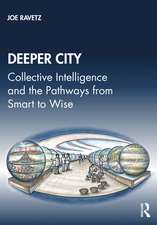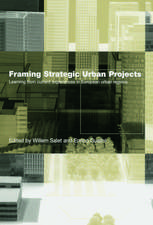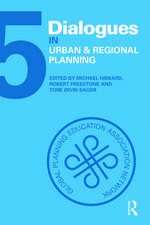Zero-carbon Homes: A Road Map
Autor Joanna Williamsen Limba Engleză Paperback – 16 dec 2011
Various new technical systems for achieving these goals are beginning to emerge. For example the passive house whose energy requirement for space heating and cooling is almost zero; the smart grid that has revolutionized the management of energy, whilst enabling the connection of small-scale, renewable energy producers and electric vehicles to the grid; or the European super-grid which will enable zero carbon energy to be generated in the Sahara desert and stored in Norway.
This book explores the diverse approaches that are being adopted around the world to deliver zero carbon homes and the different societal systems and geographic circumstances in which they have developed. It postulates a roadmap for delivering zero carbon homes, together with a toolbox approach for policy and practice to suit particular national and local circumstances.
A series of case studies are presented that offer lessons for delivering zero carbon homes. These examples are also used to demonstrate how prototype systems can move into the mainstream. The book highlights some of the instruments and mechanisms that could be used to support this transformation and addresses the wider implications of introducing these innovative systems in terms of industry, lifestyle and urban form.
| Toate formatele și edițiile | Preț | Express |
|---|---|---|
| Paperback (1) | 336.37 lei 6-8 săpt. | |
| Taylor & Francis – 16 dec 2011 | 336.37 lei 6-8 săpt. | |
| Hardback (1) | 1092.74 lei 6-8 săpt. | |
| Taylor & Francis – 16 dec 2011 | 1092.74 lei 6-8 săpt. |
Preț: 336.37 lei
Preț vechi: 428.11 lei
-21% Nou
Puncte Express: 505
Preț estimativ în valută:
64.36€ • 67.20$ • 53.27£
64.36€ • 67.20$ • 53.27£
Carte tipărită la comandă
Livrare economică 04-18 aprilie
Preluare comenzi: 021 569.72.76
Specificații
ISBN-13: 9781849712491
ISBN-10: 1849712492
Pagini: 424
Ilustrații: 56 black & white illustrations, 30 colour illustrations, 36 black & white tables
Dimensiuni: 156 x 234 x 25 mm
Greutate: 0.8 kg
Ediția:New.
Editura: Taylor & Francis
Colecția Routledge
Locul publicării:Oxford, United Kingdom
ISBN-10: 1849712492
Pagini: 424
Ilustrații: 56 black & white illustrations, 30 colour illustrations, 36 black & white tables
Dimensiuni: 156 x 234 x 25 mm
Greutate: 0.8 kg
Ediția:New.
Editura: Taylor & Francis
Colecția Routledge
Locul publicării:Oxford, United Kingdom
Cuprins
1. Introduction 2. Zero-carbon Homes – The Technological Response 3. Innovative Housing Programmes 4. Low / Zero Carbon Energy Systems 5. Low/Zero Carbon Neighbourhoods 6. Markets for Zero Carbon Homes 7. Transformation of the House-Building Industry 8. Transformation of the Energy Industry 9. Instruments for Change 10. A Spatial Dimension 11. Living with Zero Carbon 12. A Time for Change
Recenzii
"This is the book the world – of planning, architecture and housing – has been waiting for: the definitive guide to low-carbon construction" – Sir Peter Hall
"The book achieves the objective of drawing a road map towards low/zero carbon houses successfully. The book is illustrated with more than 100 tables, charts and graphs. It also contains more than 20 coloured photographs and drawings. The book is useful to professionals in urban planning, architecture, construction, and energy sector and students in these areas."— Yonca Hürol, Open House International
"The book achieves the objective of drawing a road map towards low/zero carbon houses successfully. The book is illustrated with more than 100 tables, charts and graphs. It also contains more than 20 coloured photographs and drawings. The book is useful to professionals in urban planning, architecture, construction, and energy sector and students in these areas."— Yonca Hürol, Open House International
Descriere
Housing is a major contributor to CO2 emissions in Europe and America today. The construction of new homes offers an opportunity to begin to address this issue. Providing homes that achieve 'zero carbon', 'carbon neutral', 'zero-net energy' or 'energy-plus' standard is becoming the goal of more innovative house-builders and energy providers in Europe and America. A diversity of approaches is being adopted. These are inevitably influenced by the different societal systems and geographic circumstances in which they have developed. Using case studies from Sweden, Germany, the UK and USA these alternative approaches are explored.











